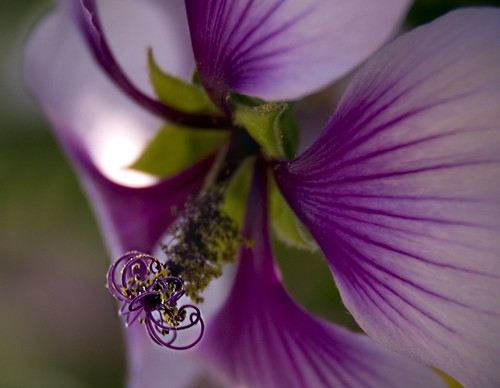I’ve been watching my neighbor Brett’s mallow tree with great interest. Not because I covet a mallow tree, or his mallow tree. Not because of the mallow’s supposed medicinal properties. Which actually boil down to having high concentrations of mucilage, as in the marshmallow.
It’s a total tangent, but if you don’t know, here’s the defintion of mucilage from the Wikipedia:
Mucilage is a thick gluey substance produced by most plants and some microorganisms. Mucilage is an exopolysaccharide—a polymer composed of sugar residues and secreted by a microorganism into the surrounding environment.
Mucilage is what’s used by carnivorous plants to trap their prey, and we happen to have a couple of new carnivourous plants to the great delight of the kids.
Anyhow, to get back to the mallow, the thing that atracted me over the past couple of weeks is that about 5PM the afternoon sun is just at the right angle over Brett’s house to backlight the flowers on the trees.
My Nikon 18-200 vibration reduction lens with an extension tube and close-up filter makes an excellent way to get macros with a sharp center of focus and a nicely blurred background. Particularly into bright light (here’s another example).
An attractive blurred effect (usually combined with fully sharp image elements) is now fashionably called bokeh—I plan to write more about bokeh later.
The point for me of this mallow photo, which is perhaps best viewed larger, is the contrast between the sharp curliques of the flower center and the elegant angel wings of the less-focused flower itself.

Pingback: Photoblog 2.0: » Photoblog 2.0 Archive: » A Weakness for Mallows